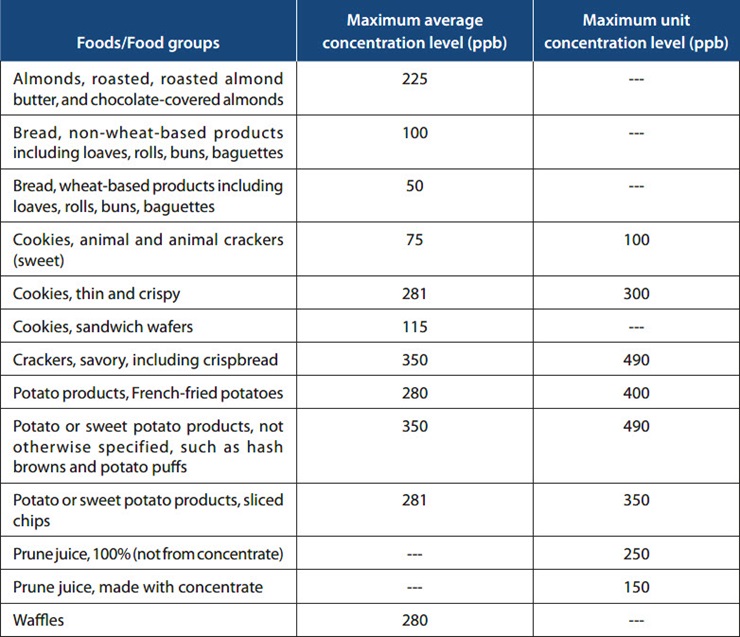The California Office of Environmental Health Hazard Assessment (OEHHA) recently proposed a new regulation on acrylamide contained in food products, which could increase costs for the cooking and heat processing of foods or require Proposition 65 warnings for acrylamide formed from these types of food processing. Currently, businesses with products containing certain plant-based foods have an opportunity to comment on the proposed regulation and the proposed concentration levels for acrylamide in foods.
Proposition 65 was approved by Californians in 1986 and requires warnings when a business knowingly or intentionally exposes individuals to chemicals that the State of California has identified as causing cancer or reproductive toxicity, unless an exception to the warning requirement applies. Although exposures to chemicals that occur naturally in foods are generally exempt from the warning requirement, this is not the case when the presence of a chemical results from human activity. California regulations consider human activity to include the cooking or heat processing of foods. Therefore, acrylamide that forms from the cooking or heat processing of foods listed in the regulation would be subject to Proposition 65 warning requirements unless occurring in concentrations at or below the maximum concentration level that the regulation identifies as being the lowest level currently feasible.
In the supporting documents for the proposed regulation, OEHHA states that its goal is “incentivizing food manufacturers and producers to reduce listed chemicals formed through cooking or heat processing to the lowest level currently feasible” by requiring a Proposition 65 warning in cases where the lowest currently feasible levels of acrylamide are not met. OEHHA determines the lowest currently feasible levels.
According to the Initial Statement of Reasons, OEHHA recognizes that certain amounts of acrylamide formed during the cooking or heating process are “unavoidable.” However, in “many circumstances” acrylamide levels can be lowered by optimizing certain practices. The proposed regulation sets out a number of practices that OEHHA views as optimal when cooking certain plant-based foods at high temperatures, including:
- Agricultural practices: for example, optimizing the type and timing of fertilizer use can reduce the formation of acrylamide precursors such as asparagine in crops such as potatoes, wheat, and barley.
- Selection, storage conditions, and handling of ingredients: for example, choice of potato variety and management of storage temperatures after harvest can reduce the formation of sugars, which are acrylamide precursors.
- Cooking duration and temperature, and other cooking, heating, or manufacturing processes: for example, reducing cooking duration or temperature can lead to less formation of acrylamide.
If this regulation is implemented as proposed, a producer, manufacturer, distributor, or holder of the food would not be required to provide a warning when quality control measures are utilized to reduce acrylamide to the lowest level currently feasible based on average concentrations. Average concentrations are calculated based on the type of packaging unit:

Importantly, the concentration levels OEHHA has proposed are based on levels previously specified in recent court-approved settlement agreements. This means that additional industry feedback provided to OEHHA during the public comment period could be vital to ensuring that the minimum levels ultimately included in the regulation reflect levels achievable industrywide.
The acrylamide levels that OEHHA has currently proposed for certain foods include certain almond products and almonds, bread, cookies, crackers, potatoes and potato products, prune juice, and waffles. As a caveat, OEHHA proposes to exempt “parties to an existing court-ordered settlement or final judgment establishing a concentration of acrylamide in a specific product covered in that settlement or judgment.”
The period for public comments to OEHHA on this proposed regulation remains open until October 6, 2020. Alston & Bird will continue to monitor for developments to California OEHHA and other regulatory requirements implementing Proposition 65.